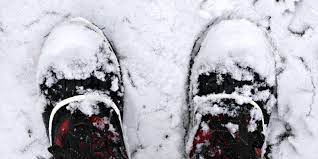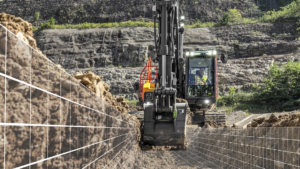Wearing PPE and staying warm during the cold winter months can be quite challenging. For example, your favourite skullcap will keep you warm for sure, but it will not protect your head against falling debris at the construction site. On the other hand, you can’t really wear a hard hat on top of that skullcap either. This means a worker must choose between keeping their head safe against the cold weather or protect it against a concussion, or worse! Thankfully, that is not how it has to be anymore, although it was an issue for a long time in the past. To keep yourself and/or your workers safe and warm during busy winter months, make sure that they have access to the following.
Safety Helmet Warmers
Since we started with head protection, let’s discuss safety helmet warmers – liners first. There are a few different types of safety helmet liners that you can chose from, but your choice should primarily depend on the type of head protection that you currently use. For example, safety helmet liners for cold climates can be fitted right in between the helmet’s impact shell and the cradle. Since liners generally come in one, universal size, they are often the one-stop solution for wintertime head protection.
Insulating Outer Layers
If your outer layers are not sufficient to protect you against sub-zero weather conditions, it can lead to immediate problems, followed up by long-term health problems. The immediate issue would be that of losing strength and flexibility, which is a common effect of cold weather exposure. This would lead to loss of work capacity, increased risk of getting injured and vulnerability to cold weather infections. It can be easily avoided with layered winter clothing that’s enclosed inside a high-visibility, waterproof, thermal/softshell jacket.
Insulating Inners
Once the temperature comes close to or dips below the freezing point, workers can start facing a host of new issues which they might not even expect. For example, hard work can and will cause people to start sweating, even if it’s freezing outside. The fact that the workers are wearing protective layers to keep them warm will cause them to sweat even more than they would otherwise.
Since taking off the protective outer layers is not an option, that sweat inside will remain trapped, slowly turning as cold as ice water. Given that it’s neither healthy, nor comfortable to work in such conditions, insulating inner layers are a must. Wool, fleece, or polyester should be your materials of choice while choosing insulated inner layers for work. They absorb moisture and prevent it from feeling like you have ice water dripping inside your clothes after just an hour of hard work.
Heavy, synthetic leather gloves and boots are quite sufficient to keep your hands and feet warm, but you will need insulating inner gloves and socks to keep the sweat form freezing your fingers and toes off. Note that minor hypothermia and cold stress while working in extreme cold climates is not as uncommon as most people believe.





Be First to Comment